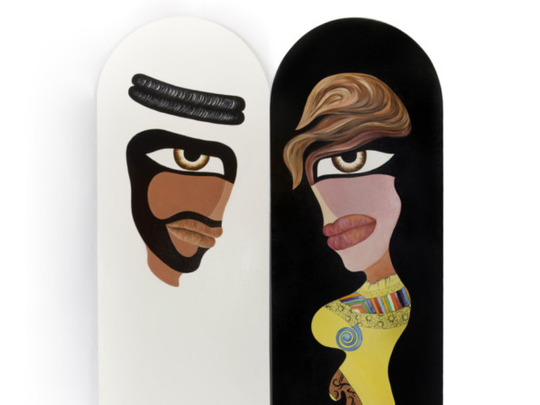
Compared to the clean lines of Scandinavian design or the rustic simplicity of the Italian countryside, Middle Eastern or Arabian aesthetic is bold, bright, rustic, opulent, over-the-top. And although often clichéd, it is far too tempting to ignore.
In Dubai, many attempts to create an arabesque feel at home often result in a heap of Turkish throw cushions, brocade wall panels, gold tissue drapes, a majlis opposite a Queen Anne chaise lounge, gilded candlesticks, jewelled pill boxes, Baroque wall plates or a Moroccan chandelier. Eclectic or exhausting?
Marcos Cain, Director and Founder of Stickman, explains Dubai is a large hub of diverse cultures, religions and backgrounds, which often intersect to create new identities.
“Yet, in the midst of such diversity, we find a very prominent and strong sense of respect for the Emirati culture, which in contrast with the European architecture and design, adds to the charm and uniqueness of the city,” says the founder of the award-winning firm.
So what is the Arabian aesthetic that we are so enthralled with and somehow always get wrong? Many homeowners tend to either go overboard or eschew it completely for fear of mishandling it.
“Arabian design is seen by most expats as the polished golden furniture with the overwhelming floral patterns, when, in fact, Arabian style could range from Moorish design and architecture, which is marked by its grand archways, intricate mosaics and artistic plasterwork, to beautifully handcrafted arabesque screens and turned timber furniture,” says Cain.
It is also important to keep in mind the four principals in Islamic architecture: mosque, palace, tomb and fort.
“Most of the Arabian furniture and interiors we see mimic the palace, which just doesn’t fit because we don’t live in palaces, but in compact apartments,” says Ankit Rastogi, Buyer Home Décor, Lifestyle.
Bringing an authentic local touch to your home involves more than a foray to the Global Village or a day at the souks. It involves a deeper understanding of the dynamics of Dubai’s aesthetic that then translates into the more micro vision of what it means to go arabesque.
“Dubai has the modern, minimalist high skyscrapers next to arabesque architectural buildings. I think The Old Town in Downtown Dubai is a great example of this mix, which has a very unique look and is a perfect instance of interpreting Arabian design,” says Linnea Forslund, Founder and Partner at Dubai-based Azzizzari Interior Design. “But there are also many spaces in the city where this often goes overboard, and the simplicity and elegance are lost.”
With a client roster that consists almost entirely of UAE nationals, Forslund believes that a look at the next generation of Emiratis is the perfect yardstick to understand the evolving Arabian aesthetic. “The younger generation is a good example of this. They have travelled the world and want to incorporate their culture and traditions in a new way and believe that less is more when it comes to design.”
Cain agrees: “Once these design schools are broken down and studied carefully, designers will find it quite interesting and exciting to incorporate Arabian design into the currently preferred Scandinavian and Italian look and feel, simply because it hasn’t been done before.”
Finding that the modern Arabian aesthetic is a dynamic and challenging arena is what prompted Lebanese designer Nada Debs to create her own Middle Eastern furniture and home accessory lines.
“The reason Arabian-designed homes looked over-the-top and so clichéd was because Middle Eastern aesthetics had not evolved with the modern times and did not adapt to the new lifestyle of the people in the region,” says Debs. “But it is now adapting and Arabs are also seeking a cultural identity in their products, to feel better about themselves and to feel a sense of pride in their culture.”
Debs, who designs accessories at Aati, Bloomingdale’s and Harvey Nichols in the UAE, says clean lines work better with contemporary furniture, but the contrast between traditional and modern furniture also works, and we are seeing more of this kind of eclectic combination that work well.
When it comes to the evolution of Arabian aesthetic, designer Maria Iqbal says there huge potential to achieve a major breakthrough: “Fashion designers in this region have done a wonderful job of transforming the traditional abaya. We can do the same for furniture and interiors.
“As a pop-style designer, I integrate what I see around me. Living in Dubai, this means Arabian as well as many other cultures. This juxtaposition of the East and the West is captured seamlessly at OConcept Store and I feel they’re a good fit for designers like me. Our passion for a new language in design, which feels familiar, is explored here.”



